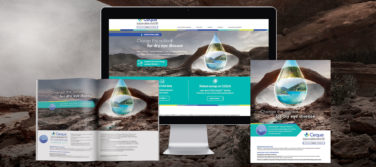The life sciences can simultaneously be thought of as one of the most risk-taking and risk-averse industries in the world. Billions are ventured each year on drug development, yet strategic decisions are made daily to minimize risk in other business areas to counter-balance those inherent in the discovery and development processes.
The same can be said for the regulatory agency that governs the life sciences.
Common perception is that the U.S. Food and Drug Administration (FDA) is solely risk-averse. As the life sciences industry well knows, stringent standards and requirements must be met to ensure the safety and efficacy of new therapies prior to marketing approval. However, regulators have also demonstrated a notable inclination for embracing risk when it is clearly in the public’s best interests.
FDA Willing to Take Certain Risks
One such example is the FDA’s willingness to consider natural history and historical control data, versus placebo comparators, in clinical trials for rare diseases. By embracing what could easily be perceived as a risky approach, the FDA demonstrates its willingness to collaborate with industry to address challenges inherent in small patient populations.1 The larger life sciences industry should take note.
To more effectively work with today’s regulators to accelerate the review and approval of new therapies, the biopharmaceutical industry must recognize both sides of that coin, lead by example, and change standard operating procedures. Adopting and leveraging state-of-the-art, AI-powered technology to integrate, curate, and harmonize the complex streams of datasets inherent in today’s drug development landscape helps achieve these goals, and benefits both the biopharma industry and regulators. Biopharma and the FDA can achieve more actionable, intuitive insights across a variety of therapeutic areas, and leverage such technology to bend and reframe the time and cost curve inherent in the multifaceted drug review process.
Embracing Data Analytics Platforms
For example, many of the most forward-thinking life sciences companies have begun embracing data analytics platforms to disrupt and optimize the crucial stages of clinical operations: Trial feasibility and planning; protocol design; trial allocation; and clinical conduct. AI-powered data analytics achieve previously unattainable, enterprise-level views of the raw data housed across disparate business silos, offering unprecedented control of, and insights to, enterprise data. Such solutions can also be integral to dramatically decreasing the cost and time of drug development.
And though the FDA’s mission of “protecting the public health by assuring the safety, efficacy and security” of new therapies unquestionably requires it to be risk-aware, its dual responsibility for “advancing the public health by helping to speed innovations that make medicines more effective, safer, and more affordable…”2 mandates that it be open to new approaches. Smart life sciences companies recognize the opportunity this presents and leverage their data analytics to ensure open, transparent, and consistent communications with the FDA, building a productive relationship. The FDA is clearly open to leveraging technology to alter standard operating procedures for the better, as evidenced by a March 2019 call-to-action from then-FDA Commissioner Scott Gottlieb, MD, who stated:
“Modernizing clinical trials is an agency-wide priority…Efforts to streamline medical product development based on advancing science can be frustrated by legacy business models that discourage collaboration and data sharing, and the adoption of disruptive technologies that make clinical research more effective. Without a more agile clinical research enterprise capable of testing more therapies or combinations of therapies against an expanding array of targets more efficiently and at lower total cost, important therapeutic opportunities may be delayed or discarded because we can’t afford to run trials needed to validate them.”3
Meeting in the Middle
Sponsors and regulators are poised to meet each other in the middle of the risk-benefit gap to successfully create pharma’s own version of Moore’s Law and modernize clinical development and drug approval. In 1965, Gordon Moore from Silicon Valley famously stated that the number of transistors in an integrated circuit would double every year, increasing in power and decreasing in relative cost at an exponential rate. In the decades since, the semiconductor industry has borne this out.
Pharma’s own version of Moore’s Law involves self-learning clinical neural networks helping sponsors and regulators alike continuously learn from all clinical trials, both historical and ongoing. The industry and FDA can leverage shared learnings to reduce the safety and efficacy issues inherent in drug development, as well as realize time and cost savings related to drug review and approval.
On their own—and in their own ways—both the life sciences industry and regulators have proved themselves to be extraordinarily innovative. However, neither has fully leveraged artificial intelligence (AI)-based technology to engineer and optimize the science of drug discovery. Doing so, especially in collaboration, would catapult therapeutic development to a new level of efficiency and output, while minimizing what have been, to date, commonly accepted risks.
Roadmapping to Reduce Risk and Improve Outcomes
An analogy for the use of technology to advance processes, innovate existing systems, leverage existing data, reduce risk, and achieve better outcomes can be found in the evolution of road mapping. After introducing its first street map in 1905, the Automobile Association of America’s (AAA) paper maps became the undisputed navigational tool for American drivers for over 90 years. When MapQuest launched in 1996 as the first consumer-focused, online, interactive mapping site, drivers began leveraging this technology to print and carry PDF versions of the specific routes they wanted to travel.
Fast forward to 2007, and the debut of Apple’s first iPhone with Google Maps’ traffic analyzer, which enabled drivers to access real-time, on-demand directions and traffic updates that allowed them to adjust mid-trip for faster and easier arrival times. Such flexibility, informed by technology, was obviously never possible with MapQuest, let alone the paper maps of bygone years.
The pharma industry and FDA still, by and large, find themselves in a MapQuest-like phase when it comes to the speed and efficiency of drug review and approval, and the ability to pivot based on new data. But that doesn’t have to be the case. Electronic submission and review of NDAs has worked well for years, but today there is a faster way to get from point A to point B, from submission to approval—one that, going back to our Google Maps analogy, gets everyone there faster, more efficiently, and with diminished risk.
Employing AI-informed Analytics is Key
AI-informed analytics platforms have the ability to empower both the life sciences industry and regulators to work more effectively with each other and reduce the risk inherent in the drug development, review, and approval continuum. Just as drivers have learned to accept different route recommendations from Google Maps, leaning in to the power of shared, AI-based analytics platforms can provide sponsors and regulators with real-time insights and recommendations from study data that can help inform trial trajectory and enable more timely arrival at the ultimate destination—NDA approval.
The significant benefits of shared, real-time data from innovative technologies is also being recognized and embraced by other highly regulated industries. Dynamic flight planning, fueled by data-driven analytics platforms and optimization tools, is remaking the airline industry. Such disruptive technologies have brought a new awareness of and appreciation for the value of a connected aircraft, and the positive impact real-time data and adjustments can have on flight patterns and conditions, speed optimization, fuel consumption, greenhouse gas emissions, structural damage, and material fatigue. All of which translates to risk reduction and improved passenger safety.4 Sound familiar?
The life sciences industry is making progress with regard to the adoption of AI analytics that inform and expedite clinical development and regulatory submission, but a willingness to change decades-old standard operating procedures must be part of that evolution.
One of the best ways to effectively work with regulators in our risk-prone/risk-averse industry is to lead by example with the adoption of state-of-the-art data analytics solutions and application of them to the entire drug discovery, development, and regulatory continuum. Often it will be practical and beneficial to do so directly and bypass contractor relationships to optimize disruption and advancement. Establishing clear, ongoing communication with the FDA and demonstrating the profound benefits such technology can bring to a new generation of drug development will encourage regulators to embrace and optimize these tools as well. By working together, industry and regulators can change standard operating procedures and leverage technology that enables them to engineer and optimize the hard but amazing science inherent in drug development.
References:
1. https://ojrd.biomedcentral.com/articles/10.1186/s13023-019-1017-5.










